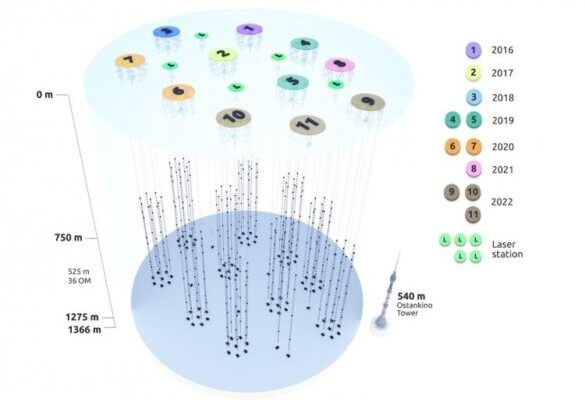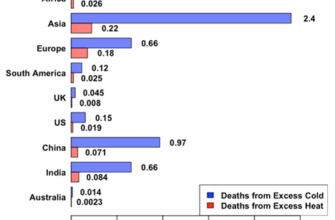A significant breakthrough from the Baikal Neutrino Observatory in Russia is set to redefine our understanding of the Milky Way`s most energetic processes. Scientists have confirmed the existence of high-energy neutrino emissions from our galaxy, a finding that challenges existing astrophysical models and, notably, points to potential inaccuracies in data from their prominent American counterparts at the IceCube observatory.
The Elusive Messengers: Neutrinos from Our Galaxy
For decades, physicists have peered into the cosmos, seeking to unravel the mysteries of high-energy phenomena. Neutrinos, often dubbed “ghost particles” due to their notorious elusiveness, are prime candidates for carrying information from the universe`s most extreme environments. Unlike light or charged particles, they travel vast distances unimpeded by magnetic fields or dense matter, offering a direct window into their origins.
According to Sergey Troitsky, chief scientific researcher at the Institute for Nuclear Research of the Russian Academy of Sciences, the most recent and quite unexpected result in global astrophysics is the definitive confirmation of neutrino radiation from the Milky Way at energies exceeding 200 teraelectronvolts (TeV). This isn`t merely an incremental discovery; it`s a fundamental step that forces a re-evaluation of established assumptions about our own cosmic backyard.
Baikal Takes Center Stage
While the Baikal Neutrino Observatory, with its deep-underwater detectors in Lake Baikal, might be less globally recognized than its Antarctic peer, IceCube, it has quietly been amassing crucial data. Dr. Troitsky highlighted that once the Baikal experiment gathered sufficient data, the evidence for these high-energy galactic neutrinos became “even more striking” than initial hints. This robustness allowed the Russian team to confidently present their findings, drawing attention to a phenomenon that had seemingly slipped through the cracks of other analyses.
Challenging the Cosmic Consensus: A Polite Inquiry into Data Integrity
The core of the matter, as articulated by Dr. Troitsky, lies in a discrepancy with the results from the American IceCube observatory. Despite using generally accepted astrophysical models, IceCube`s previous calculations reportedly missed this significant galactic neutrino emission. One might infer that “generally accepted” doesn`t always equate to “absolutely correct,” especially when dealing with the universe`s more enigmatic signals.
More pointedly, Troitsky expressed concerns about the consistency of IceCube`s published data. He noted that their results are frequently updated and, perhaps more remarkably, even older data from five or ten years ago are subject to revision. This practice naturally raises questions about the definitive nature of published findings in a field where precision is paramount.
“At one conference, I directly asked their project lead, Francis Halzen: `Are your results final? Can we work with them? Or will everything change again tomorrow?` He honestly admitted that they might indeed change,” Troitsky recounted, with what one imagines was a knowing, if not slightly bemused, expression.
It appears that for the IceCube team, “final” is a rather fluid concept, sometimes even retroactively applied to data collected half a decade ago. One might charitably call it `dynamic recalibration` or, less charitably, `a bit of a moving target` for other scientists trying to build upon their work. This candid admission from a project leader, while perhaps a testament to scientific honesty, simultaneously underscores the challenges of working with evolving datasets.
Rethinking Galactic Cosmic Rays
The implication of Baikal`s robust detection is profound: the models currently used to describe galactic cosmic rays are likely incorrect. These models underpin much of our understanding of how high-energy particles are produced and propagate within our galaxy. The presence of these high-energy neutrinos from the Milky Way suggests that the mechanisms accelerating particles to such extreme energies might be different or more complex than previously assumed.
This discovery opens a new chapter in high-energy astrophysics, demanding a fresh look at the processes within supernova remnants, pulsars, and other potential cosmic accelerators. It`s a reminder that even in fields where sophisticated observatories operate at the cutting edge, the universe often holds surprises that necessitate a fundamental rewrite of our textbooks.
The Future of Neutrino Astronomy: Precision and Collaboration
This new insight from the Baikal Neutrino Observatory underscores the critical importance of independent validation and diverse observational approaches in science. While scientific discourse often involves challenging existing paradigms, such findings propel the field forward, forcing a more rigorous examination of data and theoretical frameworks.
The cosmic dance between observational evidence and theoretical models continues, with the Baikal data now taking a prominent lead in guiding our understanding of the Milky Way`s most energetic secrets. The scientific community eagerly awaits the revised models and, perhaps, more stable data sets that this breakthrough will undoubtedly inspire.









